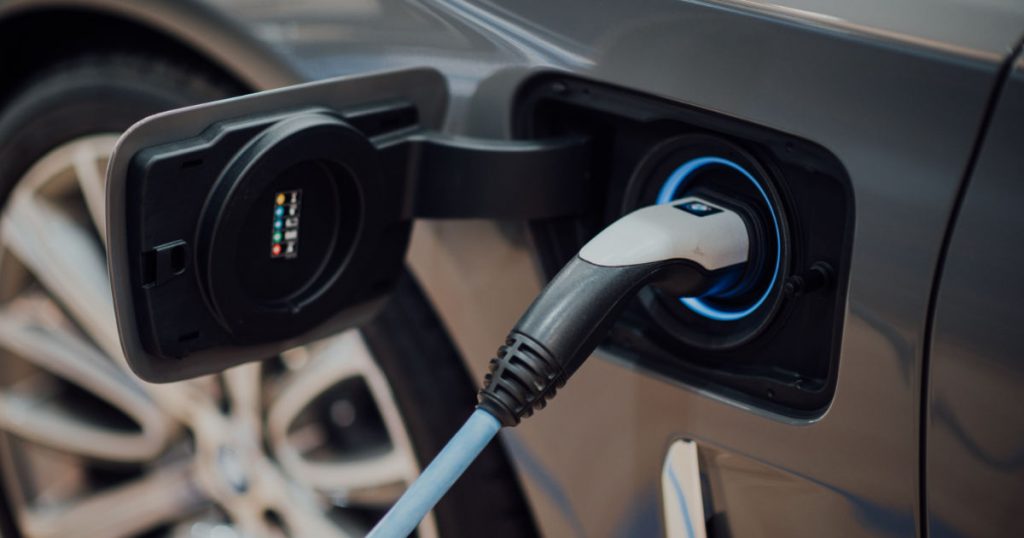
What Can Be Done by Automotive Retailers to Reduce Carbon Emissions?
The automotive industry has been a central focus of the debate around reducing greenhouse gases as the growing pressure to act on climate change is building in intensity.
Many countries have committed to reducing greenhouse gas emissions to net-zero. Net-zero is the point at which the country is removing the same amount of these climate-changing gases from the atmosphere as it is putting in.
Globally, greenhouse gas emissions from transport are growing faster than any other sector. And, with the global car fleet set to triple by 2050, according to figures from the UN Environment Programme, the automotive industry is a focus for transformation.
Nations are introducing specific initiatives to reduce transport emissions, from Costa Rica’s decarbonisation plans which include introduction of an urban electric train, to the USA’s focus on electric vehicles as part of a push to get it’s net zero plans back on track.
The UK government introduced the ‘Road to Zero’ strategy, which sees a ban on selling new petrol and diesel vehicles by 2030. As a result, motor manufacturers have been shifting focus to electric vehicles, with all major producers now having plans in place to produce a growing range of electric vehicles.
This has a significant impact on automotive retailers as they adapt to the new future.
Going Electric
Electric vehicles will have a wide range of impacts on automotive retailers, affecting nearly every aspect of their operations. There’s a lot to consider, from the redistribution of profit streams to the adoption of new operating procedures.
With fewer mechanical parts, electric vehicles will bring significant implications for the aftersales service and impact the dealer revenue model.
Servicing teams will need training to service electrified powertrain systems safely and efficiently. Sales teams will need to learn about the new vehicles and be equipped to help customers as they transition into the unknown and may have more questions throughout the sales process.

“Ambitious and Comprehensive”
Of course, delivering on the Net Zero strategy will involve a change in a wide range of areas, not just the automotive sector.
The UK Climate Change Committee recently published an independent assessment of the UK’s Net Zero Strategy, which concludes:
“Our overall assessment is that it is an ambitious and comprehensive strategy that marks a significant step forward for UK climate policy, setting a globally leading benchmark to take to COP26. Further steps will need to follow quickly to implement the policies and proposals mapped out in the Net Zero Strategy if it is to be a success.
“We welcome the Government’s recognition that reaching Net Zero and tackling climate change is not only achievable and affordable but essential to the UK’s long-term prosperity and can bring wider benefits for society, the economy and the environment.”
As well as the policy shifts needed to drive change in sectors such as power, transport, buildings and industry, there’s a need for broader engagement of the public and businesses to create positive collective action and reduce their individual and combined carbon footprints.
The UK’s aim of net-zero emissions by 2050 requires all sectors of the economy to contribute, particularly businesses that can make a significant positive contribution to carbon reduction. It’s easy to point the finger at prominent polluters such as airlines, oil and gas, and freight businesses – yet companies of all kinds may play a role.
This opens the question about what automotive retailers, and those that work alongside, should be thinking about and the practical steps that can be taken now.
What is a carbon footprint?
A company’s carbon footprint is the total amount of greenhouse gases generated, either directly or indirectly, through the course of business. It aims to identify and calculate emissions released into the environment due to business activities on an annual basis.
Several different data sources are needed to calculate the carbon footprint, including company activities, travel, and supply chains.
Why should businesses be aiming to reduce carbon emissions?
Increased regulation will likely drive some of the change as governments introduce more stringent environmental policies.
But here are some of the other reasons companies should be taking action to reduce their carbon footprint:
- Make cost savings by being more energy-efficient, reducing waste and avoiding unnecessary journeys. In addition, increasing efficiency will help the business to be more competitive.
- Growing consumer awareness and behaviour will open opportunities for sales. In an online survey by Neilson, 81% of respondents felt strongly that companies should help improve the environment. Customers use their spending power to effect the changes they want to see.
- Strengthening your brand – the British Standards Institute (BSI Group) has a carbon-neutral programme that provides the credentials that the organisation has committed to a carbon reduction journey.
- As businesses compete to attract the best talent, they need to be aware that employees view organisations that take social and environmental issues seriously as a positive factor, enhancing your appeal as an employer. This will become even more of a factor as the next generation of the workforce comes through.
How can dealers reduce their carbon footprint?
There are many changes that can be adopted to reduce a business carbon footprint. Here are some practical suggestions:
Logistics
Automotive retailers are being urged to think differently about logistics to reduce their CO2 emissions.
With more than 20 million vehicle movements taking place in the UK each year, vehicle movement specialist Engineius is challenging the ‘outdated procedures’ of the industry, claiming that the sector is a late adopter of the most efficient and greenest practices.
It claims that chaser vehicles in vehicle movement result in three miles of unnecessary additional road travel for every four miles of vehicle movement. By avoiding chaser vehicles, Engineius says it has saved over 1,000 tonnes of CO2 since its launch in April 2018.
MD Calum Slowther said: “To date, we have saved over 1000 tonnes of CO2 and, as the entire automotive industry is tasked with finding ways to reduce emissions, this area should not be overlooked.
“Another surprising find from our research was that EVs were being delivered on diesel transporters, which is completely opposed to EV cause. The greenest option is to drive EVs, not transport them.”
Effective stock management
Through our auditing activity, we know that vehicles are often not where they are thought to be! For example, vehicles get moved between dealers or to and from the body shop, yet the core dealer systems are frequently not updated.
This can result in inefficiency, wasted time and unnecessary journeys. In addition, customer satisfaction may be damaged, and sales opportunities lost when vehicles cannot be located.
Buildings & equipment
Insulate buildings as much as possible to prevent wasted energy. For example, in the summer, window film may be used to reflect heat out and then switched back so that the heat can stay in during the winter.
Keep an eye on your heating and cooling systems to ensure they aren’t competing with one another. Also, check that systems aren’t being manually adjusted, resulting in dramatic swings in temperature.
Replacing items such as boilers or lighting systems with newer, more efficient versions can help improve operating efficiency.
Lighting accounts for 20% of all the energy usage in the UK and, therefore, a significant share of energy bills. Finding ways to make lighting more efficient makes it possible to cut costs dramatically. LED lighting provides a cheaper and more environmentally friendly way of lighting premises for many organisations, typically delivering fast payback on the initial investment.
Energy supply
Switch to renewable energy, either on-site or via green electricity rates. Switching to solar power, for example, will need an upfront investment, but there will be long-term payback as well as environmental benefits.
Technology replacement
Replacement technology should be viewed holistically. IT equipment is one category that has a high rate of replacement. While some new technology will be more energy efficient to run, it’s also important to consider the overall greenhouse gas emissions generated throughout its manufacture and distribution.
According to an Edinburgh University study, extending the life of a single computer and monitor from four years to six years saves carbon emissions equivalent to about 190kg CO2.
When technology needs to be replaced, ensure it is disposed of responsibly and is recycled wherever possible. Any electronic waste should be recycled in line with WEEE standards.
Reduce travel
Simply finding ways to reduce business travel is a straightforward way to reduce the business carbon footprint and make cost and time savings!
One very simple way of doing this is switching to self-auditing using a tool such as CheckVentory Audit.
Traditionally, stock audits have been carried out via a manual, paper-based process, with funder audit staff travelling to each dealer location to audit the financed vehicles on site physically.
This manual process has clear disadvantages:
- The expense (and opportunity cost) of travelling to multiple locations to do the audits with expensive resources.
- As the funder staff complete their evaluations, the dealers’ day-to-day activities are interrupted.
- Degradation of information collected before it can be input to funder systems
- The elapsed time between audits done periodically
In addition, there’s the fundamental issue of carbon emissions resulting from the unnecessary miles being driven by auditors.
A digitised approach, carried out in conjunction with dealer groups, is one that many finance companies have begun to use, with multiple benefits.
Systems, like CheckVentory Audit, replace funder audit visits with cloud-based software accessed through mobile devices. This allows on-site dealer staff members to record stock quickly and easily, delivering the stock data instantaneously to the funder’s back office. Solutions like this facilitate more frequent audits and richer, more accurate data to be collected.
And significantly reduce those unnecessary road miles, contributing to carbon emissions reduction!

Reduce waste
This is another easily implemented area that will also save money.
Simple steps such as reducing paper waste and avoiding the use of single-use plastics can all add up. Consider reviewing whether you can:
- Replace paper records with electronic document storage
- Digitise processes to replace paper-based procedures with electronic alternatives
- Discourage unnecessary printing
- Minimise use of disposable cups
- Begin by reviewing current waste levels and take practical steps to reduce waste that emphasises recycling, reusing, and reducing.
- Educate and engage employees
It’s key to involve the wider team when making improvements or proposing new initiatives. As a result, they will be more likely to support than resist the environmentally-friendly changes. They’re also more likely to have energy-saving ideas and suggestions.
Achieving carbon reduction and moving towards a net-zero future will differ for each business.
What about carbon offsetting?
Carbon offsetting is a market. By purchasing an offset, you are trading to fund projects which reduce greenhouse gas emissions.
A common use of carbon offsets is to compensate for the carbon dioxide generated by a journey. A frequent misconception about carbon offsets is that they can cancel out emissions from a flight, which is a well-known use. However, this is not typically the case. According to research completed in 2017, 85 per cent of offset projects either overestimated their impact or failed to deliver any carbon reduction at all.
However, there can be benefits to these schemes. For example, they are often operated in developing countries, where they can help to generate jobs or support projects that wouldn’t otherwise happen. And planting trees can help to increase biodiversity and provide habitats for wildlife.
An example from the UK is Barnstaple-based Devonshire Motors, which has teamed up with carbon offsetting company co2balance.com to offset the amount of carbon produced for each vehicle sale by planting trees in co2balance’s Tinners Forest in Cornwall.
Barry Brettell from Devonshire Motors said: “The scheme is about raising awareness of climate change, and the fact that we can all do something about it. Through running this initiative, customers can drive away knowing that, for the first year at least, action has been taken to reduce their car’s impact on climate change.
“As well as offsetting this carbon, we will also be helping to plant more trees in Cornwall, which in time will be turned into a community woodland.”
Gary Rumbold from co2balance.com said: “All the trees are planted on land which we own and which we manage ourselves. This ensures that we have control over the trees in order to ensure that every one planted can absorb carbon dioxide and help combat climate change. The scheme is also a totally ‘additional’ project, which means that the trees would not otherwise have been planted but for the investment of Devonshire Motors.”

Next steps towards carbon reduction
If you are interested in finding out more or starting to implement carbon reduction initiatives within your business, several organisations can help provide support, including some certifications such as Carbon Neutral.
This DEFRA Small Business User Guide provides guidance on calculating the carbon footprint for a business.
It may be helpful to use a business carbon footprint calculator such as this – SME Carbon Footprint Calculator – created as part of The Carbon Trust’s Green Business Fund to help businesses manage and track their carbon emissions.
Specifically for the auto industry
Recently, Auto Trader has launched a new Automotive Carbon Literacy Toolkit, which it has funded and developed in partnership with The Carbon Literacy Trust.
It has been designed for the automotive industry, with input from several leading automotive retailers and manufacturers, including Nissan, Marshall Motor Group, Lookers, Motorpoint, AvailableCar and SYNETIQ.
Richard Blumberger, Chief Financial Officer at Marshall Motor Group, commented: “We at Marshall Motor Group take our social responsibility very seriously, which is evidenced by our commitment to paying back all government support received in 2021 from CJRS and retail grants to the value of around £4m. Our commitment to reducing our carbon footprint is key to this social conscience; it is just the right thing to do for our colleagues, customers, and the communities we operate in. When we were approached by Auto Trader to help shape the Carbon Literacy Project for the automotive industry, there was no hesitation from our part.”
The industry-wide collaboration demonstrates how important sustainability has become for many automotive organisations.
The toolkit is available to all organisations working within the automotive industry and has been developed to support individuals and businesses in their journey towards reducing their carbon footprint. Find out more and sign up here: carbonliteracy.com
Discover how a simple step will reduce carbon emissions and bring you multiple additional benefits by adopting CheckVentory Audit in place of a physical audit – read more or request a short demo here.
Information for funders can be found at CheckVentory for Funders.
